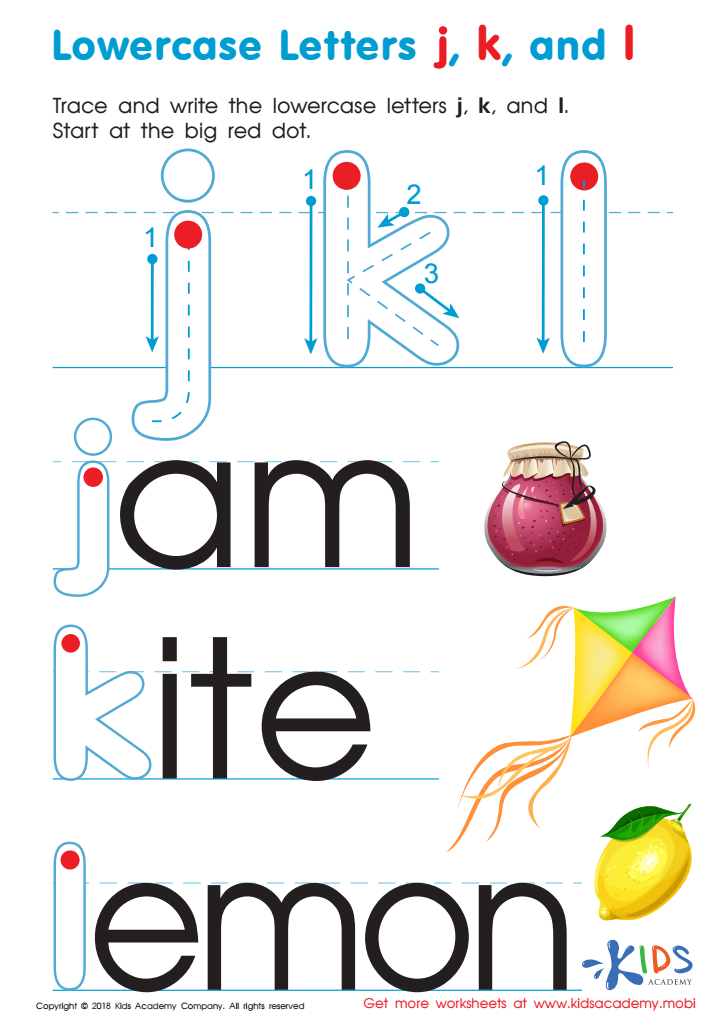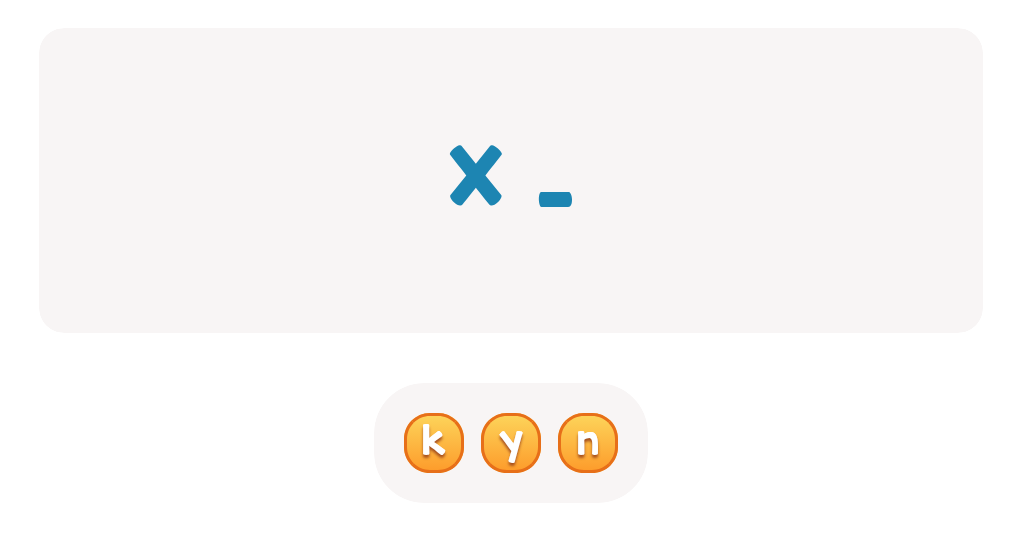Lowercase letter writing Normal Upper & Lowercase Letters Worksheets for Ages 3-6
3 filtered results
-
From - To
Unlock your child’s writing potential with our Lowercase Letter Writing worksheets designed for ages 3-6. These engaging and colorful activities help young learners practice forming lowercase letters correctly while developing fine motor skills. Each worksheet features fun illustrations and clear instructions that make learning enjoyable and interactive. Perfect for preschool and kindergarten settings, our resources foster early literacy by encouraging recognition and writing of normal uppercase and lowercase letters. Enhance your child's readiness for school with our carefully crafted worksheets, tailored to build confidence and provide a strong foundation in handwriting. Explore today and set your little one up for success!


Lowercase Letters y z Worksheet


Lowercase Letters j k l Worksheet


Lowercase Letters m n o Worksheet
Teaching lowercase letter writing to children aged 3-6 is crucial for their early literacy development. At this stage, children are forming the foundational skills needed for effective reading and writing. By focusing on normal upper and lowercase letters, parents and teachers can help children recognize and differentiate between these letter forms, which is essential for reading fluency and comprehension.
Lowercase letters are more frequently used in texts, making it important for children to become comfortable with them. As they learn to write lowercase letters, they also develop fine motor skills, hand-eye coordination, and cognitive skills through practice. This process fosters a sense of accomplishment and boosts their confidence as they learn to express themselves through writing.
Moreover, teaching lowercase letters encourages phonemic awareness, allowing children to connect sounds with letters and words. Engaging activities, such as tracing, coloring, and interactive games, make learning enjoyable, making it easier for children to remember and master these skills. By prioritizing lowercase letter writing early on, parents and teachers set the stage for successful literacy experiences, promoting a lifelong love of reading and writing. This is essential for academic success and critical thinking development as children grow older.
 Assign to My Students
Assign to My Students
























